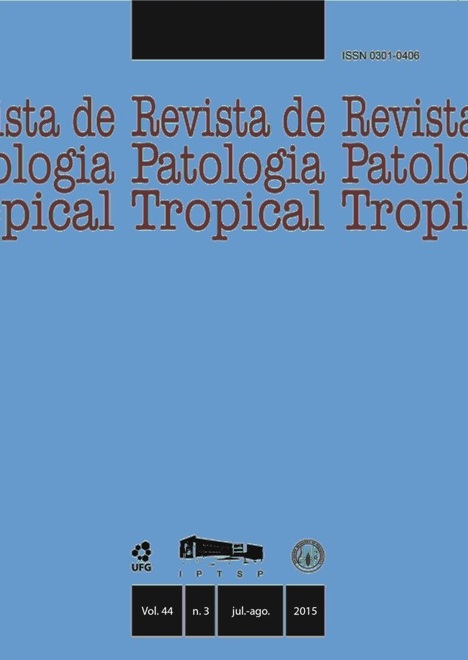AMOEBICIDAL AND CITOTOXIC ACTIVITY OF GREEN PROPOLIS AQUEOUS EXTRACT AGAINST Acanthamoeba castellanii TROPHOZOITES AND CYSTS
DOI:
https://doi.org/10.5216/rpt.v44i3.38020Keywords:
Acanthamoeba castellanii, propolis, amoebicidal activityAbstract
The genus Acanthamoeba belongs to the group of free-living amoebae and is widely distributed in the environment. These protists are known to cause severe diseases, including Granulomatous Amebic Encephalitis in immunocompromised patients and amebic keratitis, especially in immunocompetent contact lens wearers. Green Propolis is a resinous and balsamic substance, known in alternative medicine because of its several biological activities. In this study we evaluated the amoebicidal activity of an aqueous extract of green propolis against trophozoites and cysts of Acanthamoeba castellanii. At concentrations of 10 and 20 mg/mL, the extract was able to inactivate 100% of trophozoites in 24 and 48 hours, while at the concentration of 5 mg/ mL, 100% of trophozoites were inactivated in 72 hours. Acanthamoeba cysts were inactivated following 24 hours exposure to the extract at 40 mg/mL. When evaluated on human corneal epithelial (HCE) cells using a MTT-based viability assay, the extract had no significant cytotoxic effect at concentrations of 0.312, 0.625, 1.25 and 2.5 mg/mL. The adhesion test performed showed that the propolis extract reduced the attachment of Acanthamoeba to HCE cells, in a dose-dependent manner. Thus, this study demonstrated the antiparasitic activity of propolis against both forms of Acanthamoeba proving it to be a promising substance especially for the formulation of solutions for disinfection of surfaces, since it showed no toxicity to the HCE cells. However, more studies are needed to understand its mechanism of action.Downloads
Downloads
How to Cite
Issue
Section
License
The manuscript submission must be accompanied by a letter signed by all authors stating the full name and email address, confirming that the material has not been published or is under consideration for publication elsewhere, and agreeing to transfer copyright in all media and formats for Journal of Tropical Pathology. The authors will not be paid for published articles. They are solely responsible for the content of those articles, even if the Editor holds the right to adjust them to the norms of the journal.
The reviewers will not be paid for the peer review process.

